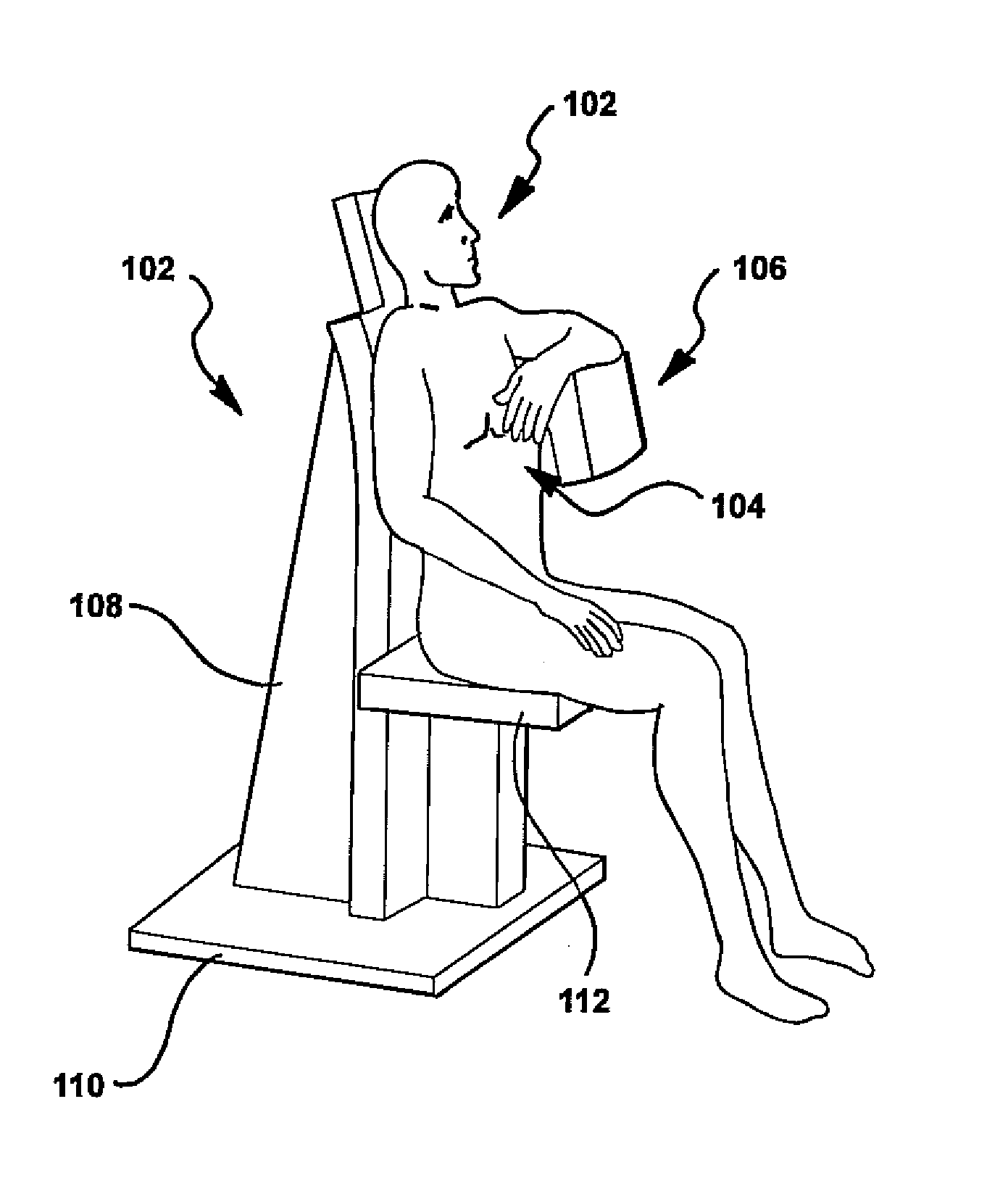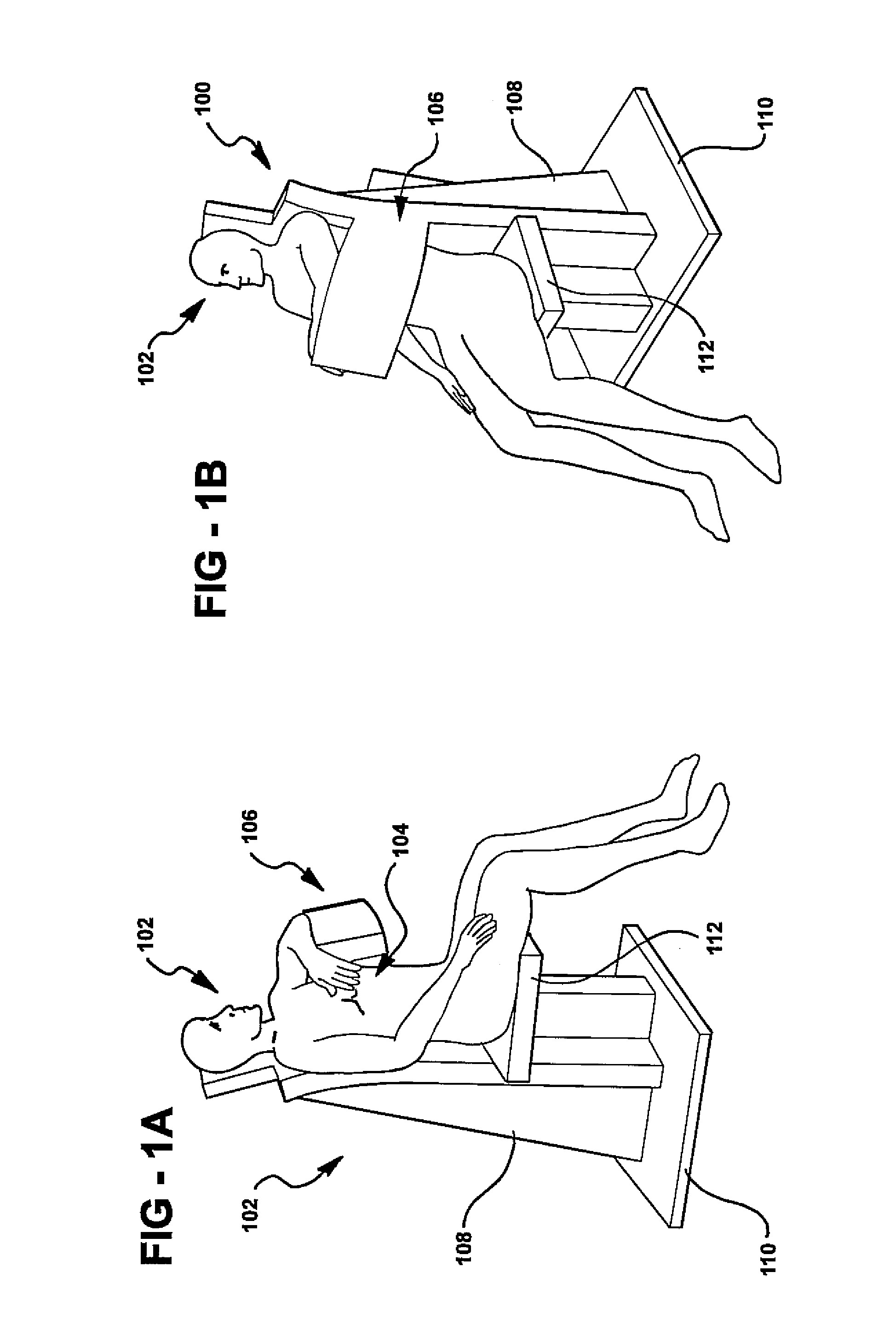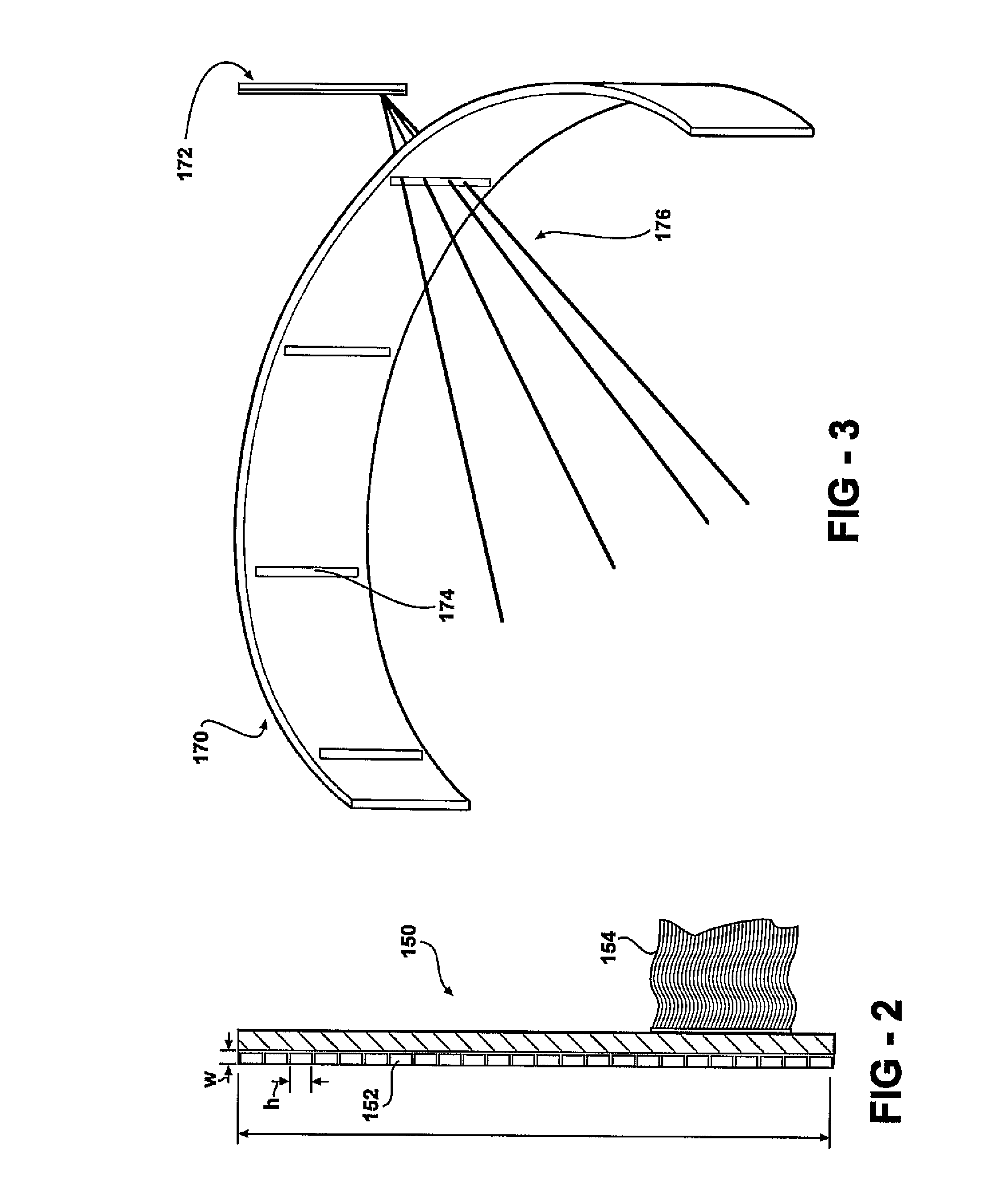Single photon emission computed tomography system
a computed tomography and single photon emission technology, applied in the field of single photon emission computed tomography system, can solve the problems of impeded spect imaging's wider implementation, unavailability to all patients, and bulky current spect system
- Summary
- Abstract
- Description
- Claims
- Application Information
AI Technical Summary
Problems solved by technology
Method used
Image
Examples
Embodiment Construction
[0116] Throughout this description, the preferred embodiment and examples shown should be considered as exemplars rather than as limitations on the present invention.
I. General Overview
[0117] One aspect of the present invention comprises a system for performing single photon emission computed tomography (SPECT). This system includes a radiation detector assembly consisting of a multiplicity of radiation detector modules preferably positioned around an arc, typically over 180 to 360 degrees. In-plane (axial) collimation is provided by a movable arc or ring extending over an angular range similar to that of the radiation detector assembly (typically 180-360 degrees). Cross-plane (longitudinal) collimation is provided by a plurality of vanes or sheets of photon-attenuating material held in a stationary position and oriented parallel to the transaxial plane (perpendicular to the longitudinal axis). Optionally, these vanes may be separated by sheets of a radiolucent spacer material su...
PUM
 Login to View More
Login to View More Abstract
Description
Claims
Application Information
 Login to View More
Login to View More - R&D
- Intellectual Property
- Life Sciences
- Materials
- Tech Scout
- Unparalleled Data Quality
- Higher Quality Content
- 60% Fewer Hallucinations
Browse by: Latest US Patents, China's latest patents, Technical Efficacy Thesaurus, Application Domain, Technology Topic, Popular Technical Reports.
© 2025 PatSnap. All rights reserved.Legal|Privacy policy|Modern Slavery Act Transparency Statement|Sitemap|About US| Contact US: help@patsnap.com



